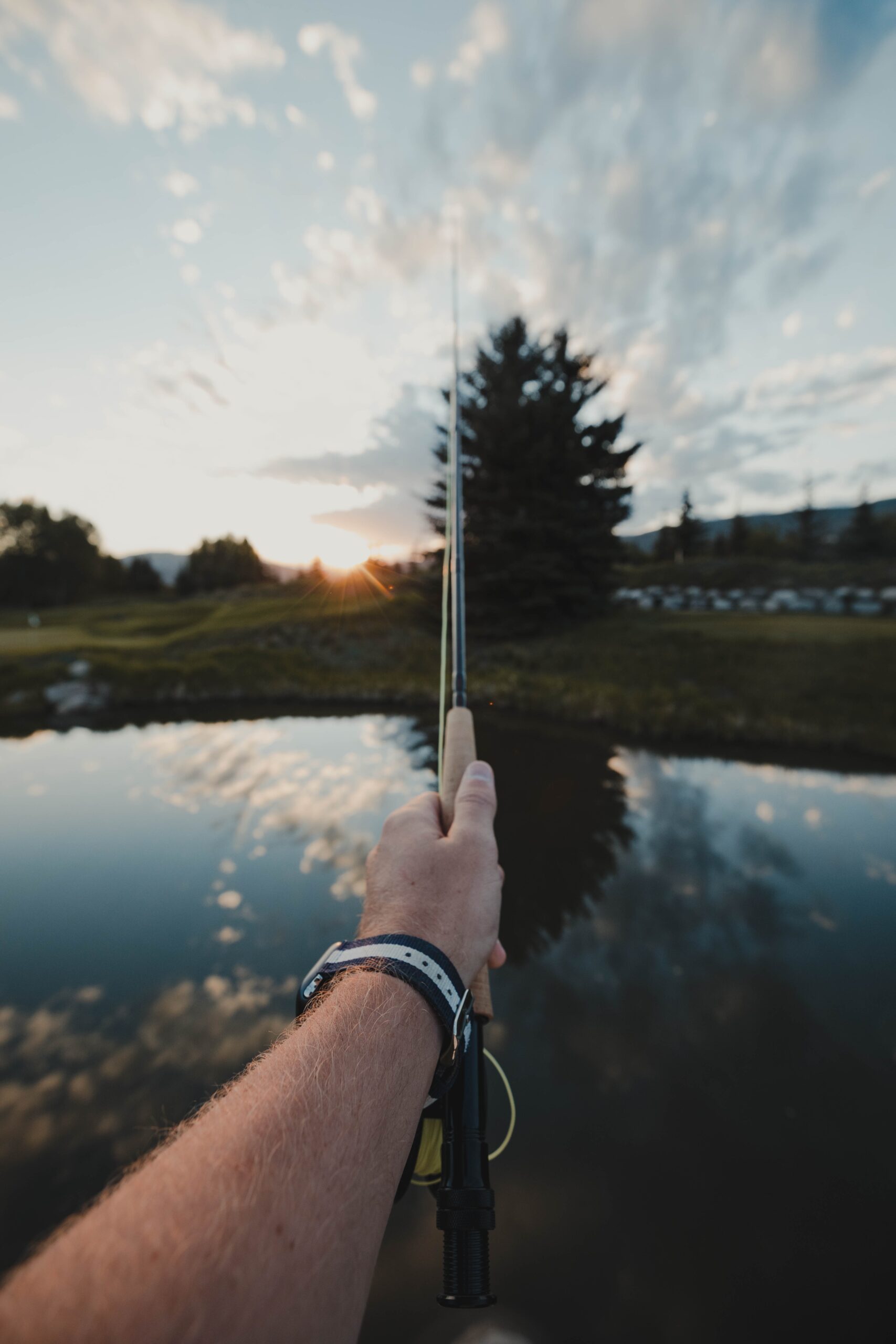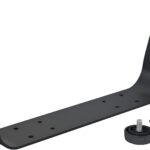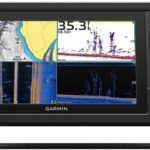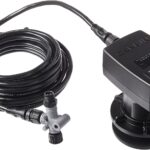Imagine gliding across the water, the sun warming your face as you navigate through serene and untouched landscapes. Fishing from a kayak offers a unique and immersive experience, allowing you to get closer to the fish and truly connect with nature. In this article, we will explore essential tips and techniques that will help you achieve the perfect balance of stealth and stability while fishing from a kayak. Whether you’re a beginner or a seasoned angler looking to enhance your skills, these valuable insights will ensure your kayak fishing adventures are both successful and enjoyable.

Choosing the Right Kayak
Consider the weight capacity and stability
When choosing a kayak for fishing, one of the most important factors to consider is the weight capacity. You’ll want to select a kayak that can comfortably support not only your own weight, but also the weight of your fishing gear and any potential catches. It’s essential to choose a kayak with a weight capacity that exceeds the total weight you plan to bring on each fishing trip.
In addition to weight capacity, stability is another crucial aspect to consider. Fishing often involves making sudden movements and shifting positions, so you’ll want a kayak that offers stability and prevents you from easily tipping over. Look for kayaks with wider hull designs or pontoons that provide better stability in different water conditions.
Choose a kayak with proper storage options
Storage is also an important consideration when choosing a kayak for fishing. You’ll need ample space to store your fishing gear, tackle boxes, and any other essentials you plan to bring on your fishing trips. Look for kayaks with spacious hatches, dry storage compartments, and built-in rod holders. Some fishing kayaks even come with specialized storage areas designed specifically for tackle boxes and other fishing gear.
Opt for a kayak with a comfortable seat
To truly enjoy your kayak fishing adventures, it’s crucial to have a comfortable seat that provides adequate support for your back. Spending long hours sitting in an uncomfortable seat can lead to backaches and discomfort, so investing in a kayak with a high-quality, padded seat is essential. Look for kayaks that offer adjustable seating positions and lumbar support to ensure maximum comfort during your fishing trips.
Essential Gear for Kayak Fishing
Selecting the right fishing rod and reel
When it comes to kayak fishing, having the right fishing rod and reel can make all the difference. Look for a fishing rod that is specifically designed for kayak fishing, as these are typically shorter in length and offer better maneuverability in the confined space of a kayak. Pair your rod with a high-quality reel that can handle the strain of reeling in larger fish.
Choosing the appropriate fishing line
Choosing the right fishing line is another important aspect of kayak fishing gear. Opt for a fishing line that is strong and durable, as you’ll need it to withstand the tension and potential abrasion from rocks and other objects in the water. Braided lines are a popular choice among kayak anglers due to their strength and ability to detect subtle bites.
Picking the right lures and bait
Selecting the right lures and bait is crucial for attracting fish while kayak fishing. Consider the type of fish you’re targeting and choose lures and bait that mimic their natural prey. It’s also a good idea to have a variety of lures in different sizes and colors to accommodate different fishing conditions and the preferences of different fish species.
Investing in a good quality paddle
A high-quality paddle is an essential piece of gear for kayak fishing. Look for a paddle that is lightweight, durable, and easy to handle. Consider the size and shape of the blades, as they can impact your paddling efficiency. Adjustable paddles are also beneficial, as they allow you to customize the length based on your height and the water conditions you’ll be fishing in.
Using an anchor system for stability
An anchor system is a useful tool for kayak fishing, as it helps to keep your kayak in place and provides stability when fishing in one spot. Look for an anchor system that is easy to deploy and retrieve, and opt for one with sufficient weight to hold your kayak steady even in moderate currents. Ensure that you have a secure way to attach the anchor to your kayak, such as a dedicated anchor trolley system.
Perfecting Your Kayak Fishing Technique
Mastering the paddle strokes for maneuverability
Proper paddle technique is essential for maneuvering your kayak effectively while fishing. Learn and practice different paddle strokes, such as the forward stroke, sweep stroke, and draw stroke, to enhance your ability to control the direction and speed of your kayak. With practice, you’ll be able to maneuver through tight spaces, navigate around obstacles, and position yourself for optimal fishing opportunities.
Learning to cast while seated in a kayak
Casting from a kayak can be a bit different from casting on land or from a boat, so it’s important to practice and adapt your casting technique. When seated in a kayak, your range of motion may be restricted, so focus on mastering shorter, more controlled casts. Practice casting from different positions in your kayak to get a feel for how the kayak’s movements can impact your casting accuracy.
Adapting to fishing in different water conditions
As a kayak angler, you’ll likely encounter various water conditions, from calm lakes to windy rivers and choppy seas. It’s essential to adapt your fishing techniques to each specific condition. In calm waters, focus on making stealthy presentations and casting along structure. In windy conditions, use the wind to your advantage by positioning yourself downwind of potential fishing areas.
Using proper kayak positioning for optimal casting
Proper kayak positioning is crucial for reaching your casting targets efficiently. Position your kayak in a way that allows you to cast towards structure, weed beds, or other areas where fish are likely to be hiding. Pay attention to wind and current direction, and use them to your advantage by positioning your kayak downwind or down-current of your desired fishing area.
Enhancing Stealth for Successful Kayak Fishing
Minimizing noise and vibrations
When fishing from a kayak, it’s important to be as stealthy as possible to avoid scaring away fish. Minimize noise by avoiding unnecessary movements and keeping your gear organized and secure. Take care when boarding or exiting the kayak to avoid excessive splashing. Additionally, be mindful of any loose items in your kayak that may create vibrations and potentially spook fish.
Wearing appropriate clothing for camouflage
To blend in with your surroundings and increase your chances of success, consider wearing clothing that matches the environment in which you’ll be fishing. Opt for neutral-colored clothing that blends in with the natural colors of the water and surrounding vegetation. Avoid wearing bright colors that may alert fish to your presence.
Using a kayak with a stable hull design
Choosing a kayak with a stable hull design is essential for maintaining stealth while fishing. A stable hull will enable you to move quietly through the water without excessive rocking or tipping. Look for kayaks with a flat or slightly rounded hull, as these designs offer better stability and minimize the amount of water disturbance created when paddling.
Controlling your body movements
While fishing from a kayak, it’s important to minimize unnecessary body movements that may create vibrations or movements that could startle fish. Keep your movements slow and deliberate, and avoid making sudden or jerky motions. Take care when leaning or reaching for your gear, as excessive movement can disrupt the water and potentially scare away nearby fish.
Improving Stability in a Fishing Kayak
Finding the center of gravity
Understanding and finding the center of gravity in your fishing kayak is essential for maintaining stability on the water. The center of gravity refers to the point where the weight of the kayak and its contents is evenly balanced. To find the center of gravity, evenly distribute your gear and adjust your seating position until the kayak feels balanced and stable.
Using outriggers or stabilizers
If you’re looking for additional stability, consider using outriggers or stabilizers on your fishing kayak. These devices attach to the sides of the kayak and provide extra flotation and stability, particularly in rougher water conditions. Outriggers can significantly increase the overall stability of your kayak, allowing you to fish with confidence and peace of mind.
Practicing balancing techniques
Improving your balance is another effective way to enhance stability in a fishing kayak. Practice shifting your weight from side to side and front to back while seated in your kayak. This will help you build core strength and improve your ability to maintain stability in different conditions. Balancing exercises can include leaning side to side, leaning forward and backward, and practicing corrective techniques if you feel the kayak start to tip.
Adding extra flotation devices
If you find that your fishing kayak lacks stability even with proper weight distribution and balance, consider adding extra flotation devices to provide additional buoyancy. This can be achieved by using float bags, foam blocks, or inflatable flotation cushions. These devices can be strategically placed in the front, back, or sides of the kayak to increase its overall stability and buoyancy.
Tips for Kayak Fishing Safety
Wearing a personal flotation device (PFD)
One of the most important safety precautions for kayak fishing is wearing a personal flotation device (PFD) at all times. A PFD is designed to keep you afloat in the event of an accident or unexpected capsize. Choose a PFD that is specifically designed for kayaking and ensure it fits properly and comfortably. Make it a habit to wear your PFD every time you go kayak fishing, regardless of your swimming abilities.
Informing someone about your fishing plans
Before heading out on a kayak fishing trip, it’s always a good idea to inform someone about your plans. Share details such as the location, estimated duration of your trip, and any specific fishing spots you plan to visit. Provide them with a reliable way to contact you in case of an emergency or if you fail to return at the expected time. This simple step can greatly enhance your safety on the water.
Checking weather and water conditions beforehand
Prior to your kayak fishing adventure, thoroughly check the local weather forecast and monitor any relevant weather alerts or warnings. Adverse weather conditions such as strong winds, storms, or rough seas can significantly increase the risks associated with kayaking. Additionally, familiarize yourself with the water conditions, including tides, currents, and any potential hazards or restricted areas. Being well-informed about the conditions will allow you to make safer decisions while on the water.
Practicing self-rescue techniques
While it’s important to avoid capsizing your kayak, accidents can happen. That’s why it’s crucial to practice self-rescue techniques before heading out on a kayak fishing trip. Learn how to re-enter your kayak from the water and practice flipping your kayak upright in a controlled environment. Familiarize yourself with different rescuing techniques, such as using a paddle float or performing a T-rescue with a fellow kayaker. These skills can be vital in the event of a capsize or emergency situation.
Knowing your limitations
Recognizing and respecting your own limitations is essential for your safety while kayak fishing. Be honest with yourself about your skill level, experience, and physical capabilities. Avoid taking unnecessary risks or pushing yourself beyond your comfort zone. If conditions become too challenging or dangerous, choose to postpone your fishing trip or seek out more suitable waters. Knowing your limitations and making smart decisions will help ensure a safe and enjoyable kayak fishing experience.
Understanding Kayak Fishing Techniques and Strategies
Trolling for fish from a kayak
Trolling is a popular technique for kayak fishing, especially when targeting larger fish species. To troll effectively, attach a trolling rig to the rear of your kayak and use a combination of slow paddling and letting out line to present your lures or bait at varying depths. Adjust your trolling speed and depth based on the fish species you’re targeting and the specific fishing conditions.
Targeting specific fish species and habitats
Different fish species have varying preferences for habitat and feeding patterns. Do some research to understand the habits and preferences of the fish species you’re targeting. For example, if you’re after bass, look for areas with submerged vegetation or underwater structures where they tend to hide. By understanding the specific fish species and their preferred habitats, you can maximize your chances of success while kayak fishing.
Using fish finders and navigation tools
Fish finders and navigation tools can greatly enhance your kayak fishing experience by providing valuable information about the underwater environment and fish activity. Invest in a kayak-friendly fish finder that allows you to locate fish, determine water depth, and identify underwater structures. Additionally, consider using navigation tools such as GPS devices or smartphone apps to help you navigate to specific fishing locations and mark potential hotspots.
Casting strategies for kayak fishing
When it comes to casting from a kayak, it’s important to adapt your casting strategies to the specific challenges and constraints of fishing in a small boat. Opt for shorter and more controlled casts, focusing on accuracy rather than distance. Practice casting from different positions within your kayak, including seated and kneeling positions, to sharpen your casting skills and increase your chances of landing that perfect catch.
Dealing with Common Challenges in Kayak Fishing
Managing wind and current
Wind and current can pose significant challenges while kayak fishing, affecting your ability to control your kayak and position yourself for optimal fishing opportunities. When faced with wind, use it to your advantage by positioning yourself downwind of potential fishing areas. Paddle in short bursts to keep your kayak stable, and adjust your casting techniques to accommodate for the wind. In strong currents, be mindful of your speed and use appropriate paddle strokes to navigate against the current.
Dealing with snags and obstacles
When fishing in areas with submerged vegetation, fallen trees, or other potential snags and obstacles, it’s important to be prepared and have a plan for dealing with them. Carry a small, sturdy knife or cutting tool to help you free your fishing line if it becomes tangled or caught on objects underwater. Take your time and exercise caution when maneuvering around obstacles, and always prioritize your safety when navigating through tight spots.
Keeping your kayak organized and clutter-free
Maintaining a clutter-free kayak is not only essential for safety but also for ensuring an efficient and enjoyable fishing experience. Keep your fishing gear, tackle boxes, and other essentials properly organized and secured. Utilize storage compartments, rod holders, and gear tracks to keep everything within easy reach. Regularly check for any loose or hanging gear that may impede your movements or potentially become entangled in the water.
Fighting and landing fish from a kayak
Fighting and landing fish from a kayak can be an exciting yet challenging task. When hooked into a strong fish, maintain your balance and use your body and paddle for leverage. Keep your fishing rod low to the water to prevent the fish from jumping and potentially capsizing your kayak. Use smooth and steady pressure to tire out the fish, and be prepared to maneuver your kayak to avoid obstacles or follow the fish as it swims. Once the fish is properly exhausted, carefully bring it alongside your kayak and use a landing net or your hands to safely bring it aboard.
Tips for Catch and Release from a Kayak
Using proper handling techniques
When practicing catch and release from a kayak, it’s essential to handle the fish with care to minimize stress and potential harm. Wet your hands before handling the fish to reduce the removal of its protective slime coating. Use barbless hooks or tools to minimize injury to the fish’s mouth and remove the hook gently and as quickly as possible. Avoid squeezing or applying excessive pressure to the fish’s body, as this can cause internal injuries.
Minimizing stress on the fish
To minimize stress on the fish during catch and release, aim for a quick and efficient release. Keep the fish in the water as much as possible, only bringing it briefly onto the kayak or your lap for unhooking or photographing purposes. Avoid excessively long fights that can exhaust the fish and increase its chances of mortality after release. Handle the fish with confidence and purpose, and release it into the water gently, allowing it to swim away on its own.
Knowing the regulations and laws for catch and release
Before embarking on a kayak fishing trip, familiarize yourself with the regulations and laws governing catch and release fishing in your area. Different regions may have specific rules regarding fish species, size limits, bag limits, or closed seasons. Ensure you are knowledgeable about these regulations and adhere to them to promote sustainable fishing practices and protect the fish populations in your local waters.
Documenting your catch for conservation purposes
While catch and release is a great way to minimize the impact on fish populations, documenting your catch can be valuable for conservation efforts and scientific research. Consider taking photographs or measurements of the fish you catch, and record any relevant information such as the date, location, and size. You can contribute this data to citizen science programs or local fishery organizations to help monitor fish populations and inform conservation efforts.
Kayak Fishing Etiquette and Ethics
Respecting other anglers and their space
When kayak fishing, it’s important to show respect for other anglers and their space. Avoid encroaching on their fishing spots or getting too close to their kayaks, as this can disrupt their fishing experience. If you inadvertently drift too close to another angler, apologize and paddle away without disturbing their fishing activities. Remember to maintain good sportsmanship and treat fellow anglers with kindness and respect.
Practicing proper fish handling and release
In addition to respecting other anglers, practicing proper fish handling and release is crucial for maintaining ethical and sustainable kayak fishing practices. Follow the catch and release guidelines mentioned earlier to minimize harm to the fish and maximize its chances of survival. Take the time to educate yourself on best practices for landing, handling, and releasing fish, and strive to be a responsible steward of the aquatic environment.
Leaving the environment as you found it
One of the fundamental principles of ethical kayak fishing is leaving the environment as you found it, or even better. Properly dispose of any trash or waste generated during your fishing trip, and consider going a step further by cleaning up any litter you come across. Be mindful of the impact your actions can have on the environment, and make a conscious effort to minimize your footprint while enjoying the beauty of nature.
Educating others about responsible kayak fishing
As a kayak angler, you have the opportunity to educate and inspire others about responsible fishing practices. Share your knowledge and experiences with fellow anglers, newcomers to the sport, or even curious onlookers. Encourage others to practice catch and release, respect the environment, and adhere to fishing regulations. By promoting responsible kayak fishing, you can help ensure the preservation and sustainability of our aquatic resources for future generations to enjoy.
In conclusion, fishing from a kayak offers a unique and exciting way to connect with nature and pursue your angling passions. By choosing the right kayak, equipping yourself with essential gear, perfecting your fishing techniques, enhancing stealth and stability, prioritizing safety, understanding fishing strategies, overcoming common challenges, practicing catch and release, and adhering to proper etiquette and ethics, you can make the most of your kayak fishing adventures. So grab your fishing rod, hop onto your kayak, and enjoy the thrill of angling from a new perspective. Happy fishing!









